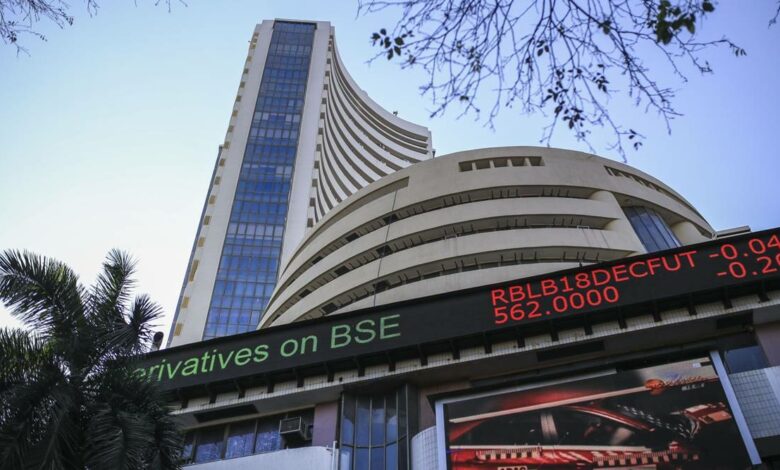Markets close modestly higher; HDFC twins shine

The Sensex and Nifty notched up gains for the second straight session on Monday, buoyed by banking and finance counters, as investors took heart from a continuing decline in COVID-19 cases.
Mixed overseas cues and a weakening rupee capped the gains, traders said.
The 30-share BSE Sensex climbed 111.42 points or 0.22 per cent to finish at 50,651.90. The broader NSE Nifty rose 22.40 points or 0.15 per cent to 15,197.70.
SBI was the top gainer in the Sensex pack, advancing 2.73 per cent, followed by L&T, Axis Bank, PowerGrid, ITC, Maruti, Dr Reddy’s and HDFC.
Index heavyweights HDFC twins accounted for most of the index’s gains.
On the other hand, Titan, IndusInd Bank, M&M, HUL, UltraTech Cement and Bajaj Finserv were among the major losers, shedding up to 1.22 per cent.
Domestic equities remained positive despite mixed global cues as persistent decline in daily COVID-19 caseload and improvement in recovery rate continued to lift investors’ sentiments, said Binod Modi, Head – Strategy at Reliance Securities.
“…a steady decline in fresh COVID cases and hopes of the lockdown being lifted sooner has influenced the domestic market to extend its gains. Positive quarterly earnings and easing asset quality woes helped banking stocks to attract buying interest while mid and small-cap stocks outperformed.
“On the global front, UK and US Manufacturing PMI data reported record-high numbers, however investors are awaiting inflation data for guidance on monetary policy,” said Vinod Nair, Head of Research at Geojit Financial Services.
Daily COVID-19 infections in India dipped to 2,22,315, the lowest in around 38 days, pushing the total tally of coronavirus cases to 2,67,52,447, while the death toll crossed the 3-lakh mark, according to the Union Health Ministry data updated on Monday.
Sector-wise, BSE power, oil and gas, utilities, realty, capital goods and industrials indices rose as much as 1.89 per cent, while telecom, metal, FMCG and consumer durables ended in the red.
Broader BSE midcap and smallcap indices rose up to 0.86 per cent.
Global equities were mixed as investors awaited crucial US inflation data for cues on the Federal Reserve’s monetary policy stance.
In Asia, bourses in Shanghai and Tokyo ended on a positive note, while Hong Kong and Seoul were in the red.
Markets in Europe were largely trading with gains in mid-session deals.
Meanwhile, international oil benchmark Brent crude was trading 1.81 per cent higher at USD 67.55 per barrel.
The rupee declined by 13 paise to close at 72.96 against the US currency on Monday as rising crude oil prices weighed on investor sentiment.




